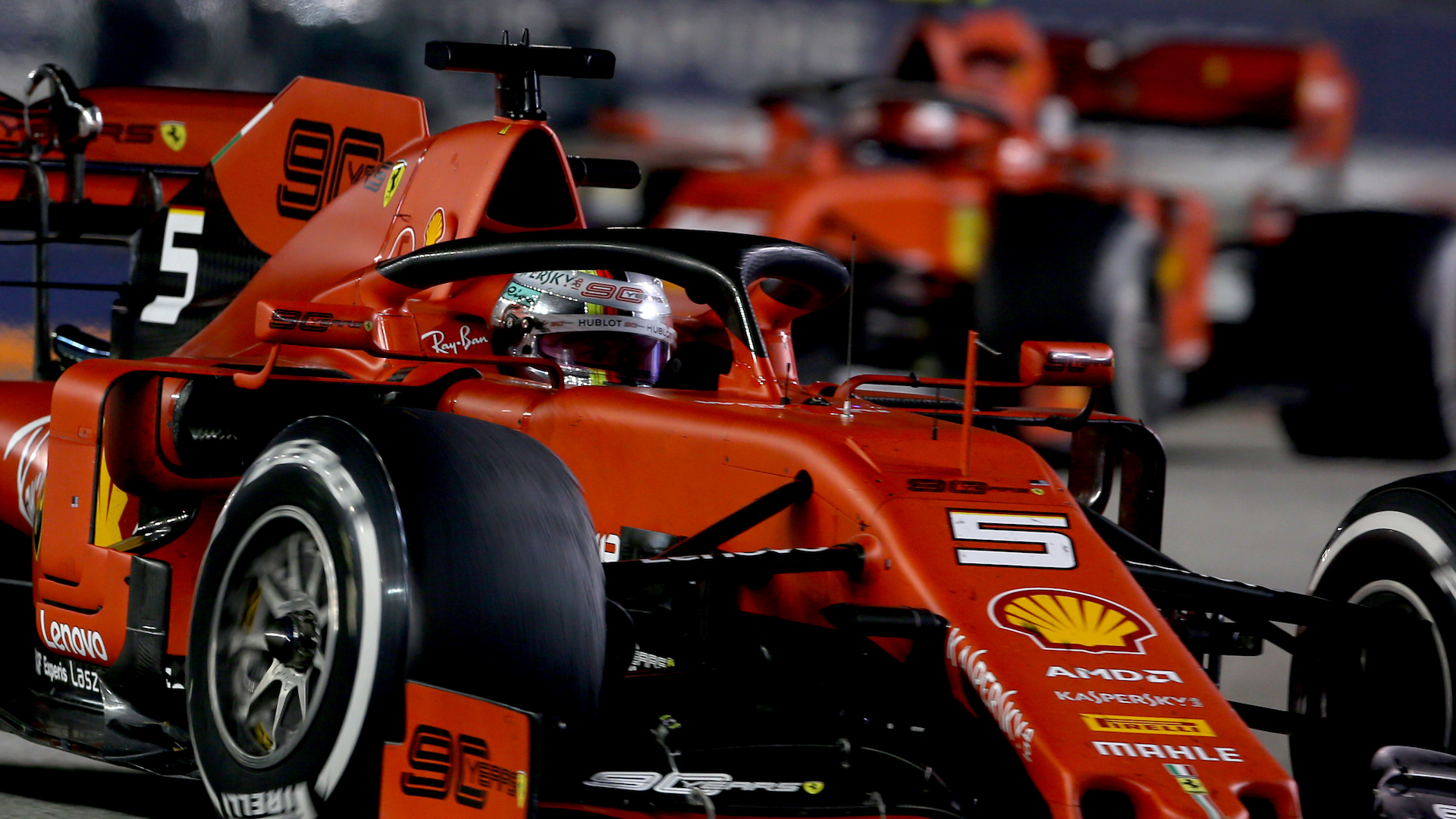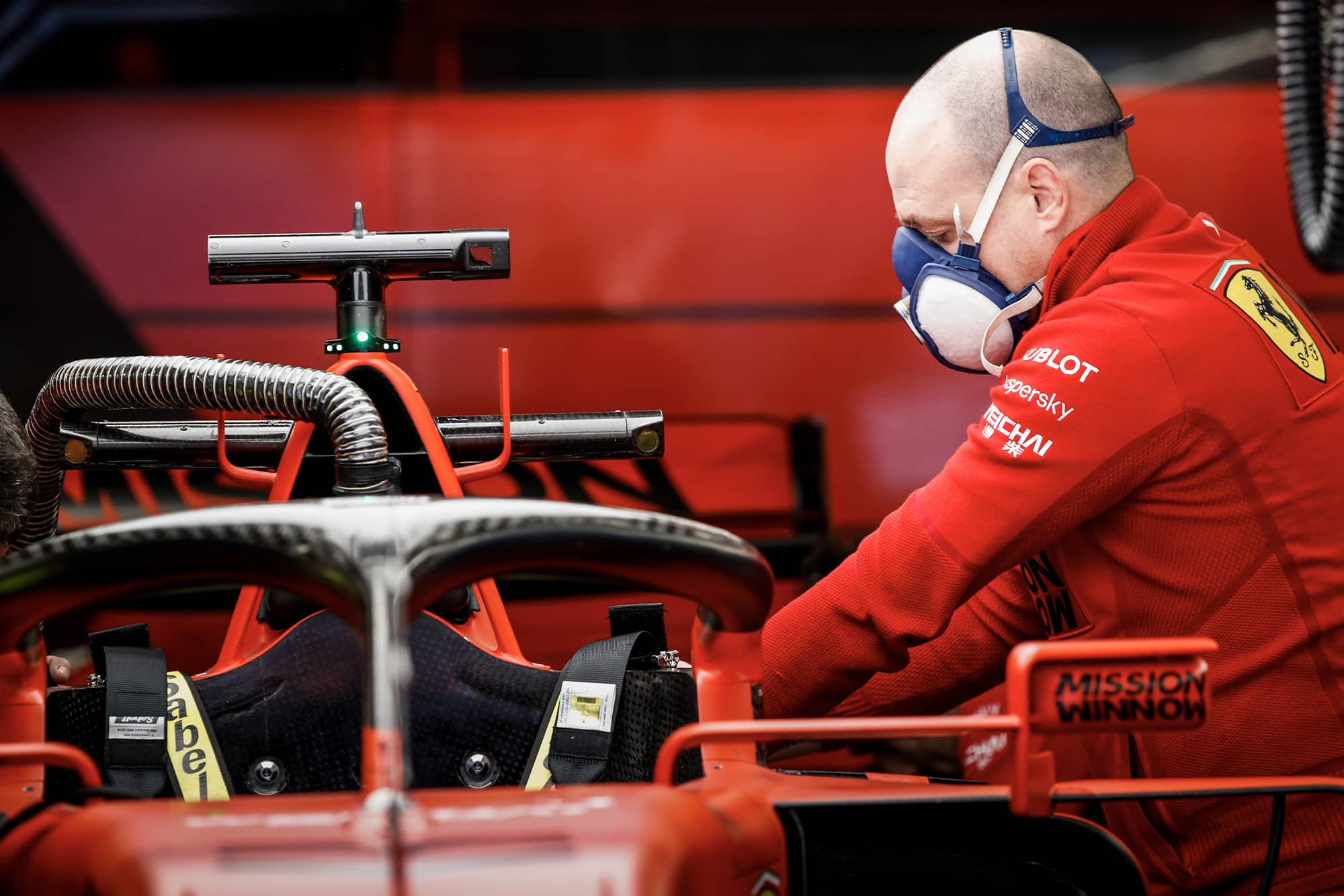In the high-stakes, adrenaline-fueled world of Formula 1, where hundredths of a second separate glory from defeat, the line between innovation and infringement is razor-thin. The 2019 season will forever be remembered not just for the battles on the track, but for a simmering controversy that cast a long shadow over the sport’s most iconic team: Scuderia Ferrari. It was a saga of suspicion, technical intrigue, and backroom politics that questioned the very integrity of the competition, culminating in a secret deal that left more questions than answers.

The season began with Mercedes dominating, but as the summer break concluded, something shifted dramatically. The scarlet cars of Ferrari, particularly in the hands of the young and prodigiously talented Charles Leclerc, found a blistering turn of speed that left their rivals breathless and bewildered. The transformation was most evident on power-hungry circuits like Spa-Francorchamps and the legendary temple of speed, Monza. On the long straights, the Ferrari SF90 seemed to operate in a different dimension, pulling away from Mercedes and Red Bull with an almost supernatural advantage.
While Ferrari celebrated a triumphant homecoming at the Italian Grand Prix, with Leclerc fending off the Mercedes duo to claim a historic victory, the paddock was buzzing with whispers. Rival teams, armed with terabytes of GPS data and telemetry, couldn’t reconcile Ferrari’s straight-line speed with the known limitations of the hybrid power units. The advantage was too significant, too sudden, to be a simple matter of a clever aerodynamic setup. The suspicion began to center on one critical component: the engine, and more specifically, how it was being fueled.
The technical regulations in Formula 1 are notoriously complex, but the rule at the heart of the controversy was relatively straightforward. Since the dawn of the V6 hybrid era in 2014, the regulations stipulated a maximum fuel mass flow rate of 100 kilograms per hour. This rule is crucial; exceeding it, even for brief moments, provides a direct and substantial horsepower advantage. To police this, the FIA, the sport’s governing body, mandates the use of a standardized, high-tech ultrasonic fuel flow meter in every car. This sensor was supposed to be incorruptible, a silent guardian of fair play.

However, rival teams began to suspect that Ferrari had found an ingenious method to deceive this guardian. The leading theory was that the team had developed a way to temporarily exceed the 100 kg/h limit in the spaces between the sensor’s measurement pulses. By manipulating the fuel delivery in a highly sophisticated manner, they could inject more fuel into the engine than the sensor was registering, effectively tricking the system. This practice, known as “aliasing,” would allow for a power boost on the straights without triggering any alarms.
The whispers grew into a roar. Red Bull Racing, never shy about confrontation, formally queried the FIA, seeking clarification on the legality of such a system. The tipping point came at the United States Grand Prix in Austin. In response to the queries, the FIA issued a Technical Directive, a clarification of the rules that explicitly outlawed any system designed to circumvent the fuel flow measurement process.
What happened next was damning. In that very race weekend, Ferrari’s astonishing straight-line speed advantage vanished. The SF90 was suddenly pedestrian on the straights, and the team’s performance fell off a cliff. For their rivals, this was the smoking gun. Red Bull’s star driver, Max Verstappen, never one to mince words, publicly stated, “That’s what happens when you stop cheating.” The comment was a bombshell, escalating the paddock gossip into a full-blown public scandal.
The FIA was now under immense pressure to act. Following the Brazilian Grand Prix, officials seized parts of the fuel system from one of the Ferrari-powered cars for detailed inspection. The plot thickened at the final race in Abu Dhabi when a pre-race check found a “significant” discrepancy between the amount of fuel Ferrari declared was in Charles Leclerc’s car and the amount the FIA measured. The team was fined for the inaccurate declaration, but the incident only added fuel to the fire of suspicion regarding their fuel-related practices all season.

As the winter break descended, the F1 world awaited a verdict. Everyone expected a thorough investigation, a transparent report, and, if wrongdoing was found, a severe penalty that could include disqualification from the 2019 championship. Instead, what came was a bombshell of a different kind. On the final day of pre-season testing for the 2020 season, the FIA released a short, cryptic statement. It announced that after a “thorough technical investigation,” they had reached a private settlement with Ferrari.
The statement was a masterclass in ambiguity. It confirmed that the two parties had “concluded their analysis” but that the “specifics of the agreement will remain between the parties.” The FIA admitted that it was “not fully satisfied” that Ferrari’s power unit had complied with the regulations at all times but conceded that it lacked the “unequivocal evidence” to prove a breach in a court of law. In lieu of a formal punishment, Ferrari agreed to a series of “technical commitments,” including assisting the FIA in future monitoring of power units.
The reaction from the other teams was one of collective fury. Seven non-Ferrari-powered teams—Mercedes, Red Bull, McLaren, Renault, Racing Point, AlphaTauri, and Williams—co-signed a letter expressing their shock and demanding full transparency. They argued that a secret deal was unacceptable and undermined the integrity of the sport. The idea that a team could be suspected of a serious breach, yet escape public scrutiny and penalty through a confidential settlement, was an affront to the principles of fair competition.
The controversy highlighted the immense political power that Ferrari wields within Formula 1. As the only team to have competed in every season since the championship’s inception, Ferrari holds a unique historical and commercial importance. Many insiders believe that the FIA, led at the time by President Jean Todt—who had presided over Ferrari’s golden era with Michael Schumacher—opted for a solution that would avoid a protracted legal battle and a scandal that could deeply damage the sport’s most famous brand. A public conviction for cheating would have been catastrophic for Ferrari’s reputation and, by extension, for Formula 1 itself.
The aftermath was stark. For the 2020 season, the FIA introduced a new, more robust system for policing fuel flow, including a second, encrypted sensor with randomized sampling rates, effectively closing the loophole Ferrari was suspected of exploiting. Coincidentally or not, Ferrari’s performance plummeted. The team endured one of its worst seasons in decades, struggling for pace and languishing in the midfield. For many, this dramatic fall from grace was the ultimate confirmation that their 2019 speed had indeed been rooted in the now-outlawed power unit trickery.
Years later, the 2019 Ferrari power unit scandal remains a raw and divisive topic. Was it a case of brilliant engineers pushing the boundaries of the rules, only to be reined in by a nervous governing body? Or was it a calculated and deliberate act of cheating, covered up by a politically motivated secret deal? Without the full details of the FIA’s investigation, the truth remains locked behind the closed doors of the settlement. It stands as a cautionary tale of the gray areas in Formula 1’s rulebook and a stark reminder that in this glamorous, high-speed world, the most intense battles are often fought not on the racetrack, but in the shadows of the paddock and the corridors of power.
News
Die Welt hat sich weitergedreht: Marie Fredriksson rechnet leise ab – 5 Stars, die sie im Stich ließen.
Der Klang von Roxette war der Soundtrack einer ganzen Generation. Mit Hits wie „It Must Have Been Love“ und „The…
Conny Froboess: Die bittere Wahrheit hinter der Traumkarriere – Im Alter trägt sie eine unheilbare Wunde.
Der Name Conny Froboess ist in Deutschland untrennbar mit einem Gefühl von Leichtigkeit und sonnigen Kindertagen verbunden. Wenn ihr größter…
DER WACKELDACKEL DER REPUBLIK: WIE MERZ’ „HERBST DER REFORMEN“ IN EINER EISZEIT DER STARRE ENDETE UND UNSERE ZUKUNFT VERPFÄNDET WIRD
Einbruch in die politische Wirklichkeit: Die bittere Bilanz nach dem Versprechen des Aufbruchs Mit großen Versprechungen begann die Zeit, die…
Bommes’ Nerven liegen blank: Unerwarteter Eklat in der letzten Folge von „Gefragt – Gejagt“ schockt die Fans
Ein Augenblick, der das harmonische Ende einer Quiz-Saison sprengte. Ausgerechnet in der vorerst letzten Ausgabe der erfolgreichen ARD-Show „Gefragt –…
Herzschlag-Finale in der Scheune: Friedrich und Laura trotzen dem TV-Kitsch mit dem ehrlichsten Liebesbeweis der Staffel
Der leise Moment, der lauter spricht als jede große Inszenierung Es war der Moment, auf den Millionen von Zuschauern der…
Kai Pflaume bricht sein Schweigen: Das 30-Jahre-Geheimnis hinter Deutschlands Vorzeige-Ehe und warum seine Ilke sein wichtigstes Korrektiv ist
Die deutsche Fernsehlandschaft hat viele Gesichter, aber nur wenige sind so konstant, so sympathisch und so untrennbar mit dem Gefühl…
End of content
No more pages to load












